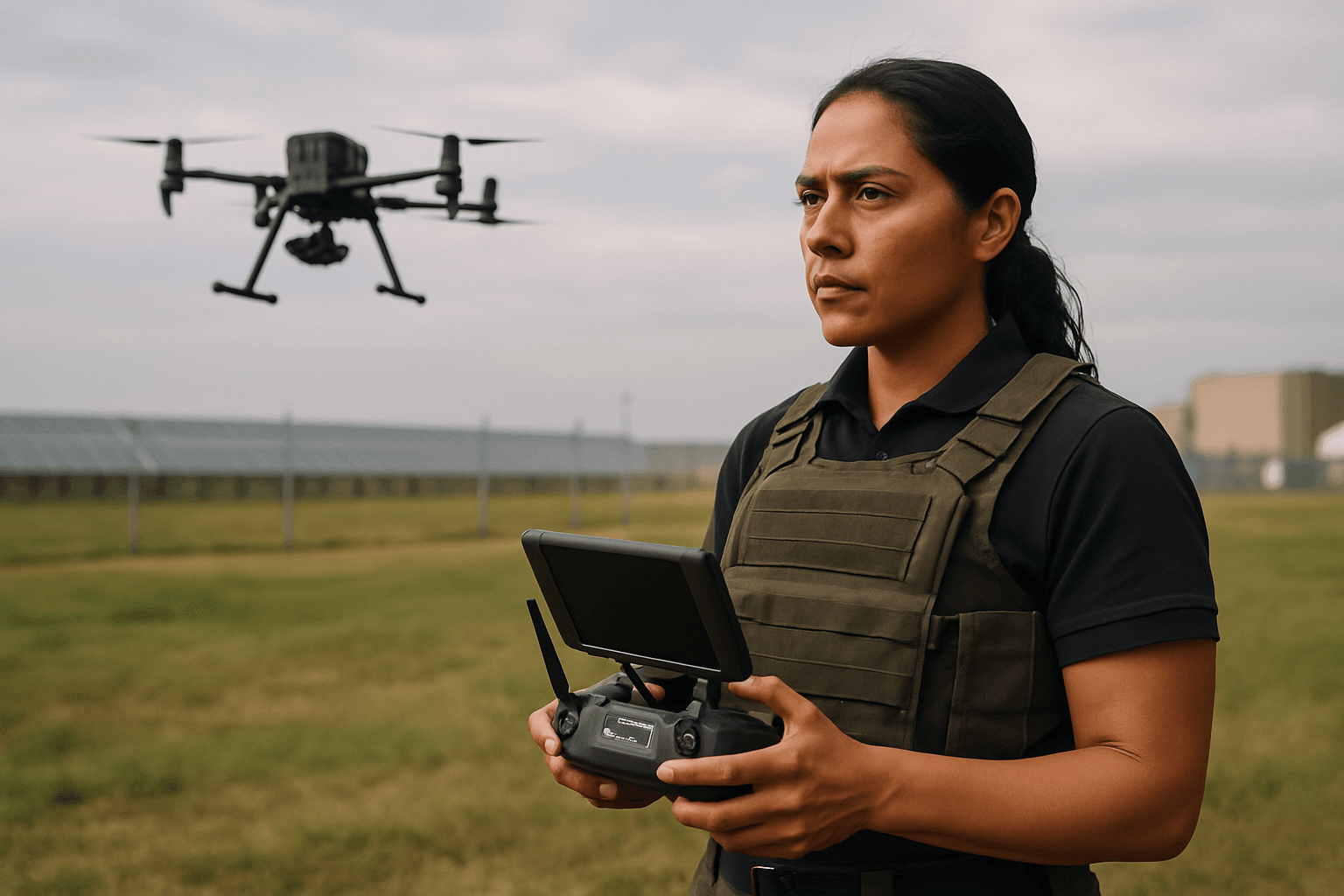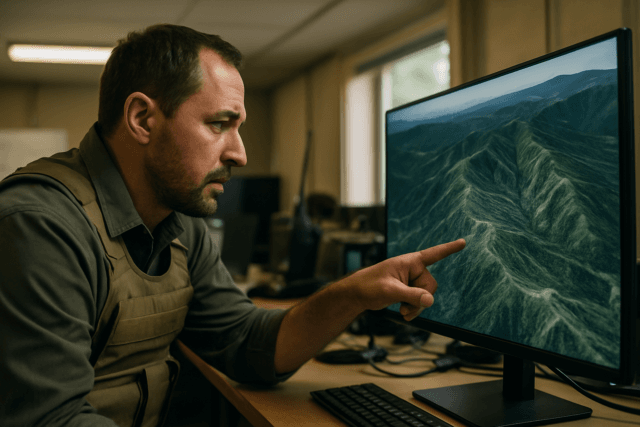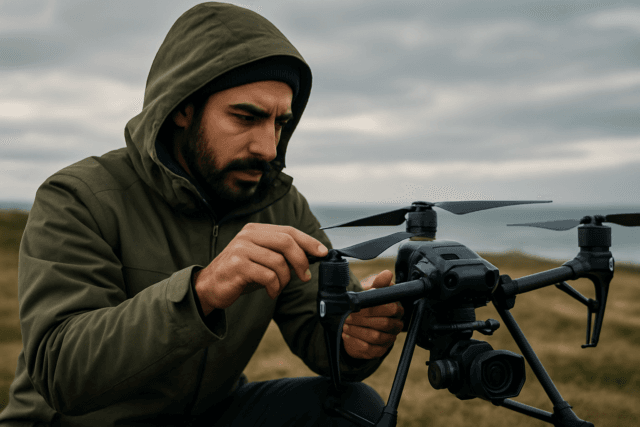The integration of Unmanned Aerial Vehicles (UAVs), commonly known as drones, has revolutionized modern security operations, offering unparalleled aerial situational awareness and enhancing response capabilities across various sectors. From critical infrastructure protection to public safety and event monitoring, drones have become indispensable tools. However, the effective and responsible deployment of these advanced systems hinges critically on comprehensive and specialized training protocols for drone pilots in security roles.
The Evolving Landscape of Drone Security
Drones are transforming security paradigms by providing capabilities that traditional methods often cannot match. Their ability to deliver real-time aerial intelligence, survey vast or hazardous terrains, and reduce human risk makes them invaluable assets for modern security operations.
Why Drones Are Essential for Modern Security Operations
Modern security challenges, ranging from perimeter breaches to large-scale event management, demand agile and efficient solutions. Drones offer a unique vantage point, enabling automated patrols, anomaly detection, and rapid assessment of incidents. They are used for:
- Perimeter Monitoring: Automated patrols and detection of anomalies to secure boundaries.
- Event Surveillance: Providing overhead views for crowd control, traffic management, and incident observation at large gatherings.
- Critical Infrastructure Protection: Inspecting and monitoring vital facilities like power plants, transportation networks, and communication hubs.
- Incident Response: Delivering real-time intelligence for law enforcement, emergency medical services (EMS), fire departments, and search and rescue (SAR) operations.
- Reconnaissance and Overwatch: Gaining immediate visibility in dangerous or inaccessible areas before human entry, thus reducing risk to personnel.
Challenges and Risks in Drone Security Deployment
While drones offer significant advantages, their deployment in security roles also presents challenges and risks, including potential misuse by malicious actors for espionage, data breaches, or even weaponization. Ethical concerns related to privacy, data security, public perception, and accountability are paramount. Addressing these requires robust legal frameworks, strict regulatory measures, and a commitment to ethical guidelines.
Core Training Components for Security Drone Pilots
Foundational and specialized training are crucial for drone pilots operating in security roles. This training goes beyond basic flight skills to encompass regulatory compliance, advanced operational techniques, and ethical considerations specific to security applications.
Regulatory Compliance and Legal Frameworks
All commercial drone operators, including those in security, must adhere to national and international aviation regulations. In the United States, this typically involves obtaining an FAA Remote Pilot Certificate (Part 107 license). Key regulatory areas include:
- Pilot Certification: Demonstrating an understanding of regulations, operating requirements, and safe flight procedures.
- Aircraft Registration: Commercial drones must be registered with the relevant aviation authority.
- Airspace Management: Understanding airspace classifications, restrictions, and obtaining necessary authorizations (e.g., LAANC).
- Night Operations: Specific training and conditions are required for operating drones at night, including anti-collision lighting.
- Remote ID: Many regulations now require drones to broadcast identification and location information to enhance safety and security.
- Security Threat Assessments: For certain high-risk operations, personnel may undergo security threat assessments, including criminal history and immigration checks.
Advanced Flight Operations and Maneuvering
Security missions often require pilots to operate in complex and dynamic environments, necessitating advanced flight skills beyond basic maneuvers. Training should include:
- Precision Flight in Confined Spaces: Navigating through obstacles, indoor environments, and tight corridors with accuracy.
- Emergency Procedures and Risk Management: Practicing responses to GPS loss, low battery warnings, unexpected equipment malfunctions, and emergency landings.
- Tactical Maneuvers: Proficiency in techniques such as maintaining a stable hover, precise forward/backward and lateral flight, yawing, orbiting, and figure-eight patterns.
- Weather Assessment: Understanding how various weather conditions (wind, rain, temperature) impact drone performance and operational safety.
Sensor Operation and Data Interpretation
Drones in security roles are equipped with various sensors to gather critical information. Pilots must be proficient in operating these payloads and interpreting the data they collect:
- High-Resolution Cameras: Capturing clear visual evidence and real-time video feeds.
- Thermal and Infrared Imaging: Detecting heat signatures for search and rescue, night operations, or identifying hidden threats.
- Lidar Sensors: Creating detailed 3D maps, useful for topographic mapping and site analysis.
- Multi-Sensor Fusion: Understanding how data from different sensors can be combined for enhanced situational awareness.
- Obstacle Avoidance Sensors: Utilizing ultrasonic, infrared, and radar sensors for safe navigation, especially in complex environments.
- Data Security and Storage: Ensuring the secure transmission, storage, and handling of sensitive surveillance footage and other collected data.
Mission Planning and Execution
Effective security operations with drones require meticulous planning and flawless execution. Training protocols should cover:
- Pre-flight Planning and Risk Assessment: Identifying airspace restrictions, potential obstacles, landing zones, signal interference sources, and public presence.
- Defining Waypoints and Flight Paths: Using mission planning software to set precise flight paths, altitudes, and specific actions (e.g., image capture intervals).
- Automated Mission Scheduling: Programming drones for routine patrols and inspections with dynamic scheduling capabilities.
- Integration with Security Systems: Understanding how drone data integrates with security operations centers for a unified threat picture.
- Contingency Planning: Developing emergency protocols for communication loss or equipment failure.
Emergency Procedures and Risk Management
Pilots must be prepared for unexpected scenarios. This includes:
- Loss of Control Link: Procedures for automated return-to-home functions and manual recovery.
- Loss of GPS: Manual flight techniques when GPS is unavailable.
- Battery Management: Understanding battery life limitations, contingency landing sites, and safe power-down sequences.
- Collision Avoidance: Practicing evasive maneuvers and utilizing obstacle detection systems.
- Incident Reporting: Documenting any anomalies or accidents thoroughly.
Specialization in Security Applications
Beyond core competencies, security drone pilots often require specialized training tailored to specific operational contexts.
- Surveillance and Reconnaissance Techniques: Mastering covert observation, tracking targets, and maintaining persistent stare capabilities.
- Perimeter Patrol and Intruder Detection: Implementing automated patrol patterns, identifying suspicious activity, and using “fly-to-cue” technology that directs drones to ground sensor alerts.
- Event Security and Crowd Monitoring: Managing drone operations in crowded environments, assessing crowd density, and identifying potential threats or emergencies.
- Search and Rescue Operations (SAR) Support: Utilizing thermal imaging and systematic search patterns to locate missing persons, especially in difficult terrain or low-light conditions.
- Counter-Drone Operations: Understanding drone threat landscapes, vulnerabilities, and the use of counter-drone technologies such as radar, optical, acoustic, and radio frequency sensors for detection and mitigation.
Continuous Professional Development
The drone and security industries are characterized by rapid technological advancements and evolving regulatory landscapes. Continuous professional development is essential for security drone pilots to maintain proficiency and relevance.
Recurrent Training and Skill Refinement
Regulatory bodies like the FAA require recurrent training for commercial drone pilots every 24 months to ensure their knowledge remains current. This includes updates on:
- New and pending FAA regulations and law changes.
- Refresher on flight procedures and emergency protocols.
- Skill refinement through advanced drills and scenario-based training.
Staying Abreast of Technological Advancements
Pilots must be informed about new drone platforms, sensor technologies, AI-powered analytics, and software updates that enhance security capabilities. Training programs should incorporate exposure to cutting-edge tools, such as advanced obstacle avoidance, increased flight endurance, and enhanced payload capabilities.
Ethical Considerations and Public Perception
Ongoing training should reinforce the ethical responsibilities associated with drone surveillance, particularly regarding privacy, data security, and public trust. This includes:
- Understanding guidelines on who has access to drone footage and how long it is retained.
- Addressing public concerns about privacy and safety through transparency and clear communication.
- Obtaining informed consent when necessary and providing clear information about data collection and usage.
Establishing a Robust Training Program
A truly effective training program for security drone pilots involves a structured curriculum, qualified instructors, practical exercises, and official certification.
Curriculum Design and Instructor Qualifications
Training curricula should be comprehensive, covering theoretical knowledge and practical flight experience. Programs like Axon’s Tactical Drone Instructor Certification School focus on equipping instructors with skills to teach tactical operations, including night flights and indoor searches. Curriculums often include:
- Airspace rules and regulations.
- Weather assessment.
- Technical specifications and maintenance of equipment.
- Security-specific modules such as detection, monitoring, and counter-drone protocols.
Practical Simulation and Field Exercises
Hands-on experience is vital. Training should involve:
- Flight Simulators: To practice maneuvers and emergency scenarios in a controlled environment.
- Field Exercises: Real-world scenarios, including open and obstructed test courses, to evaluate pilot proficiency and drone capabilities.
- Scenario-Based Training: Practicing responses to tactical situations such as building searches, vehicle clearance, and incident response.
Certification and Licensing
Beyond basic commercial drone pilot certification (e.g., FAA Part 107), specialized certifications for security operations are increasingly important. Some programs combine drone qualifications with traditional security licenses, creating dual-qualified professionals. Certificates of completion from reputable training providers further validate a pilot’s expertise in security-specific drone applications.
By adhering to these rigorous training protocols, organizations can ensure their drone pilots are not only proficient in flight operations but are also well-versed in the legal, ethical, and tactical intricacies of employing UAVs for security, thereby maximizing their effectiveness and upholding public trust.





